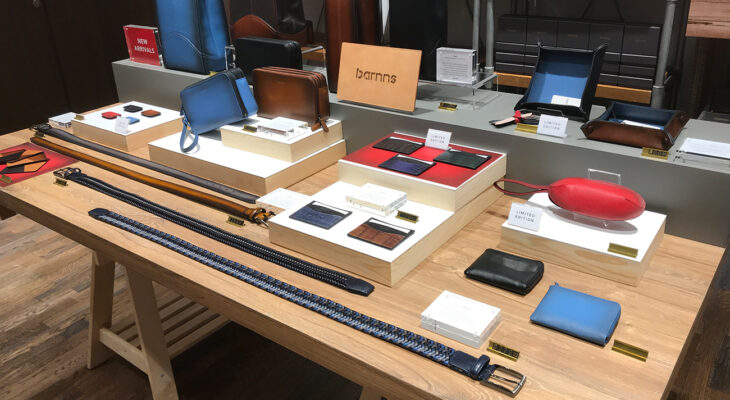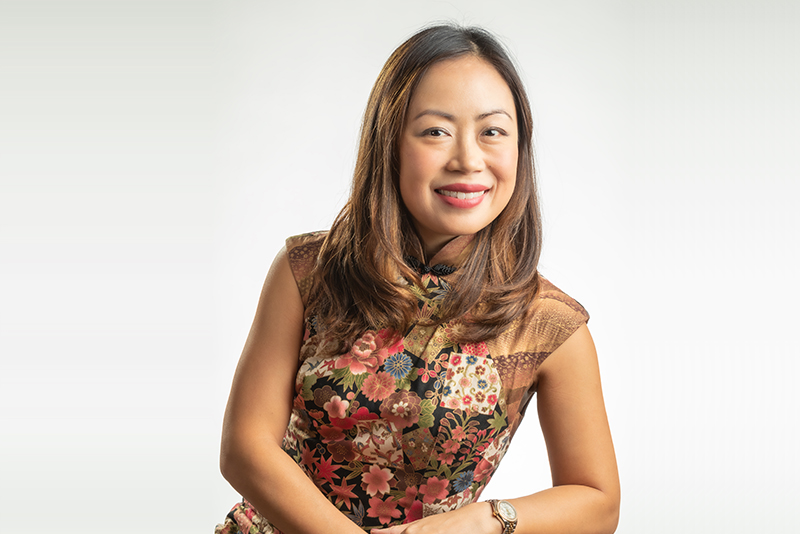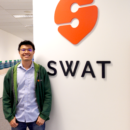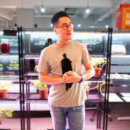
Taking A Structured Approach Towards Change
Lifestyle goods distributor The Craftmark Group has embarked on a transformation journey to drive its long-term growth in a post-COVID world.
The Craftmark Group was established in 1981 as a purveyor of quality leather bags, leather wallets, and other accessories. For four decades, it has helped to grow a suite of international brands, as well as marketing and managing their distribution in Singapore and Southeast Asia.
Craftmark holds exclusive distribution rights to lifestyle brands such as Picard from Germany and FX Creations from Hong Kong. In 2007, it created its own homegrown brand, Tessere, which focuses on the concept of weaves as an expression of the interwoven nature of life. The company also launched Barnns in 2018 to inspire joyful living through the sublime touch of leather.
After it was hit by the COVID-19 pandemic, Craftmark sought to pivot its business towards ecommerce and digitalisation to boost efficiency and generate new revenue streams. To seek guidance on this transformative journey, the company signed up for SBF’s MAP initiative, which provides participants with a guided path towards transformation and new growth.

Speaking to BiZQ, Craftmark Director, Adelene Tan, shares her company’s experiences battling the pandemic and how MAP has helped her company successfully navigate the crisis.
How does Craftmark decide on which brands to market and distribute in Singapore and Southeast Asia?
It is very important for us to first understand the brand philosophy of a potential partner, and whether its philosophy aligns with our company’s mission, vision, and values. We also determine how strong and well-received the brand is, as that will help us in marketing their products.
The product-market fit for any product is also very important. Southeast Asia comprised many heterogeneous markets, with a range of different demographics and spending power. So, what may work in a developed country like Singapore may not necessarily work in developing countries.
How has the pandemic disrupted supply chains for Craftmark, and how have you dealt with this problem?
We used to travel several times a year for sourcing and to meet our suppliers, but we have not been able to do that because of travel restrictions. So, those meetings have pivoted online, which allows us to continue our operations and minimise any potential disruption.
Such online meetings are more cost effective and can be more productive as well because there is less downtime from travel. However, a face-to-face meeting is more conducive for building relationships and working on product-related matters. It allows us to physically touch the product samples and prototypes, which is very helpful for a product-led business like Craftmark. Currently, we collaborate with our partners virtually on product matters until it reaches a stage where we feel comfortable, and then we get them to ship it over.
Shipping products from our business partners to Singapore is another challenge. There has been a lot of port congestion and flight delays, so products are taking longer than normal to arrive. We must plan even further in advance by considering such delays.
How has consumer behavior shifted because of the pandemic, and how has Craftmark responded?
Many customers are now shopping online much more, which is why we have moved to ecommerce in a major way. We are now working to improve our online shopping experience for our customers and expand our reach. In the long run, we want to transform to become a more digital business.
Offline, we distribute our products in Singapore, Indonesia, and Malaysia through retail outlets, but as we are now listed on international ecommerce platforms like Zalora and Amazon, we have a much bigger reach and can penetrate international markets like Taiwan and Hong Kong as well.
Why did you decide to sign up for MAP?
Like many retail companies, we were adversely impacted by the pandemic. I realised very quickly that we had to pivot the business because the old ways were not really working given the changing landscape, and the results were not going to be optimal in the longer term if we did not try to digitalise.
When I found out about the MAP initiative from SBF, I thought it was a really timely. I have found the MAP programmes to be extremely useful for our business transformation.
How has the learnings from MAP helped in your company’s recovery and transformation journey?
For business transformation to be successful, there needs to be a structured process. Otherwise, it is very haphazard and likely will not result in an optimal outcome. You also need the right mindset and strategic alignment within the company. My team and I attended a MAP workshop that was very helpful because it focused on strategic alignment and how to chart our company’s direction.
We learnt about a framework that could help us drive business transformation. It is called the Hoshin Kanri method of strategy planning and communicating the strategic goals and action plans throughout the company. It is a great tool for strategic planning, alignment, and strategy execution. This method is not just about strategic planning at a high level, but also helps drill down to exactly what needs to be done by the various team members. I found that this method really clarified what we needed to do to get us to where we want to go.
In conjunction with that, the DRIVE Framework (Define, Review, Improve, Verify, Establish) for business transformation is powerful when applied well. After defining what we want to achieve and implementing the plan from the Hoshin Kanri method, the next steps would be to review and improve on the plan. After that, we will verify the results and establish certain processes to allow us to sustain that change over the longer term.

What are your key transformation priorities in the year ahead?
We need to transform the business into one where ecommerce contributes more significantly than it did previously. It is easy to say, ‘I want to be strong in ecommerce’, but you need a proper activity system within the company to support and sustain the push into ecommerce. I had to transform our operations to one that supports and drives the ecommerce business forward, as ecommerce is not just a platform to boost sales in our existing markets, but also serves as a springboard for penetration into international markets.
We are already seeing some early signs of success, in terms of ecommerce sales, the quality of our sales and marketing initiatives, and the digital marketing tools and automation tools that we are using. We are now in a better position compared to before attending MAP.
What is one piece of advice that you can offer to other companies before they embark on their business transformation projects?
It is important for the company to first take stock of where they are now, and for them to clearly define the desired future state of the company. The next step would be to utilise and optimise proven frameworks that can guide the business transformation process in a structured way. This helps ensure that all the strategies are aligned with the company’s goals. The action plans that follow should then dovetail with the strategies.
The management and employees must then adopt the right mindset and be strategically aligned to achieve the desired business transformation. Overall, this systematic approach makes it easier for the company to move forward in the right direction and ensures a much higher chance of a successful business transformation.
The MAP initiative was launched by SBF on 1 April 2021. The current run of MAP is open to SBF members with supply chain operations or are in the logistics sectors, and is supported by DesignSingapore Council, GIC, Infocomm Media Development Authority, Institute for Human Resource Professionals, Institute of Technical Education, Korn Ferry, Republic Polytechnic, Singapore Polytechnic, and The Thought Collective. Visit MAP To find out more.



















